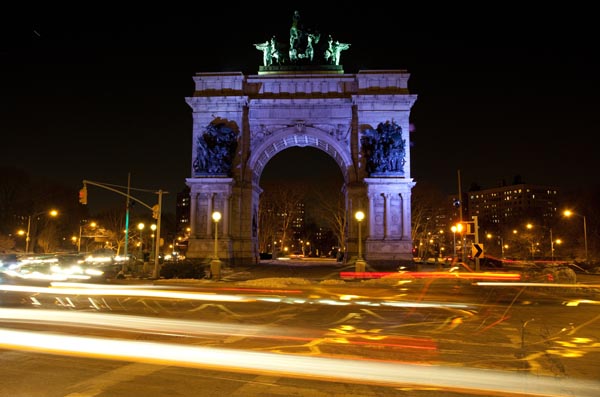
Photo by: Marc Fader
Grand Army Plaza, Brooklyn
There’s no shortage of pride in Brooklyn.
Whether you’re a fan of pizza from Di Fara’s, Spumoni Gardens, Roberta’s or Lucali’s; or you claim to know where to find the very best taco and dim sum in Sunset Park, the next big music act out of Bushwick or Williamsburg, or the block in Dyker Heights with the most stunning Christmas lights—it’s pride in the vitality and character of our communities, their rich history, the perfect scale and look of our old buildings and the sharp elbows of the new ones, which adds up to the always fascinating and seldom dull landscape of 70 distinct neighborhoods that is Brooklyn.
While others have Paris and Rome, we’ll always have Brooklyn—a borough of bridges, brownstones, and boardwalks; a home with endless wonders to explore, just a walk or subway ride away.
But justifiable pride of place should not make us reluctant to look deeper and examine serious challenges to Brooklyn’s well being.
While Brooklyn is booming—rapidly rivaling our neighbor across the river as the place to live and work—it’s still home to sky-high poverty rates, too many low-performing schools, under resourced public housing developments, shaky health facilities, young people out of school and out of work, and a tragically large number of seniors barely getting by.
When we launched the Brooklyn Community Foundation just over two years ago, we wanted to be a force for good. We wanted to bring resources and ideas to strengthen communities and engage Brooklynites in giving and service to others. But we knew that in order to do this we needed to help Brooklynites look through a more accurate lens on issues and trends in the borough to help us all be more deeply informed about the place we live: what’s affecting our neighborhood schools, how local businesses are faring in this economy, and how are decisions being made about future development. Francis Bacon was right: Nam et ipsa scientia potestas est. Knowledge is power.
So our sights were set on generating more easily accessible local information—data, reporting, analysis—to empower Brooklynites to get active and be part of making Brooklyn better for all who live here.
To lay the groundwork for an information renaissance in Brooklyn, we took two major steps. First, we funded and created the Center for the Study of Brooklyn at Brooklyn College, a research institute solely focused on Brooklyn. Second, we teamed up with City Limits to get a grant from the John S. and James L. Knight Foundation to build the Brooklyn Bureau, a new source of serious investigative journalism for all of Brooklyn.
Right now in the media there are two Brooklyns: the Brooklyn of artisanal cheese shops and the Brooklyn of murder and mayhem.
While we love that there’s no shortage of ink on how “cool” Brooklyn is, there’s an egregious lack of reporting dedicated to civic and social issues in what would be the nation’s fourth largest city. We’re not comfortable with the idea of Brooklyn being split apart by income disparity and selective investment, and the general media paying attention to just a sliver of what’s happening here.
We need to hold everyone to a higher standard. And the Brooklyn Bureau, with its dedication to investigating local issues particularly in underserved communities across our borough, is a key part of our work to do that.
While City Limits’ reporters are canvassing Brooklyn for untold stories and new perspectives, researchers at the Center for the Study of Brooklyn at Brooklyn College are completing work on a series of Neighborhood Profiles for each of Brooklyn’s 18 Community Districts. These information-rich profiles look at key civic indicators over the past decade, so that we can begin to see trends and identify needs across neighborhoods, the borough, and the City.
The Neighborhood Profiles will premiere on the Brooklyn Bureau later this month. In the spring, we will build on this neighborhood-level work to publish the first ever Borough-wide Brooklyn Trends Report, examining the strength of our collective local economy, housing stock, health and healthcare, public safety, education system, environment, and the arts.
We invite you to join us at the Brooklyn Community Foundation as we create a chronicle of 21st century Brooklyn life. In subsequent columns we’ll take a thorough look at each of Brooklyn’s 18 Community Districts through the lens of City Limits’ reporting, the Center for the Study of Brooklyn’s data analysis, and the Brooklyn Community Foundation’s knowledge of the nonprofit community and key public policy issues.
We hope you’ll accompany us on this journey to explore one of the liveliest, most interesting places on the planet—sometimes referred to as the people’s republic of Brooklyn—and we hope it inspires you to Do Good Right Here.







